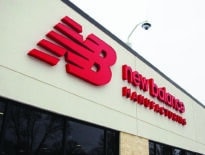Tim Rowe
Founder and CEO, Cambridge Innovation Center
Age: 54
Industry experience: 40 years
After founding the Cambridge Innovation Center in 1999, Tim Rowe has given tech companies such as Google and Hubspot a launching pad for expansion in Greater Boston through its shared workspaces. The company has 1.5 million square feet of innovation centers operating and under development globally, and member companies have attracted $10 billion in investment. Rowe used some of the same collaborative strategies when the COVID-19 pandemic spread in early 2020, founding CIC Health to roll out hundreds of testing sites and later mass vaccination clinics in Massachusetts.
Q: What takeaways came from the COVID-19 testing and vaccination rollout by CIC Health when thinking about how to respond to future pandemics?
A: The main thing the world has learned is: Just get vaccinated. Not everyone agrees, but the data shows you’re much more likely to survive COVID [if you’re vaccinated]. We also found there was an enormous willingness to collaborate. There’s these crisis moments where everyone comes together, and it was pretty cool to get on the phone with the New England Patriots and the Boston Red Sox and say, “Can we use your stadium for that?” and them to say, “Yes.” And for free.
Q: What were the biggest logistical hurdles to overcome in such a massive undertaking?
A: Everything was new. These things have to be stored. Where can you get a minus-70-degree Celsius refrigerator? It was just patience and working through it and involving a lot of experts. The hospital systems were great. We collaborated with Beth Israel Deaconess Medical Center and Mass General Brigham, and the state administrators were great. We had experts coming in looking at how we were storing these vaccines. It wasn’t rocket science. It was just a lot of details that were new for anyone, and I’m really impressed with the teams that pulled it off. Early on, there was a lot of trepidation about the vaccines, and there was something magical about offering them in Fenway Park and in Gillette Stadium. It got people telling their neighbors, “You should do that too.” We know a lot more now. In the schools, learning the most efficient way to get a consent document from parents, we went through six different ways of that. There’s a lot of microlearnings there.
Q: How is hybrid work affecting the day-to-day usage of Cambridge Innovation Center sites?
A: I thought it was a bit of a buzzword, but it’s not. It’s what we see. Three years ago, we’d see a 10-person company, and eight or nine could show up on any given day. And today it’s a 30-person company, and every day 10 people show up. Sometimes they get all 30 people together for big meetings and maybe a meal. The pattern and use of these spaces has shifted. What’s interesting is our spaces were already designed for sharing and small meetings, and it seemed to seamlessly shift into this mode.
Q: How can CIC differentiate itself from competitors in this niche?
A: Our bread-and-butter is we’ve always been the “Geek Central.” Many of our facilities have wet laboratories for life science. I don’t think anyone else does that, at least the large-scale shared workplaces. We tend to be located next to big universities. We also tend to be much larger. A typical center might be 20-30,000 square feet, but we’re at 300,000 in Cambridge between our two buildings.
Q: Do you expect the dispersed workplace model to affect CIC’s business model?
A: Everyone has their prediction. If you look at residential real estate in Boston, it tells you people very much want to be in Boston. There doesn’t seem to be any diminution of being in these hubs. The residential rates are skyrocketing. If you talk to individuals, almost nobody wants to be in their home all the time, particularly in this tech world where your relationships are a big part.
Q: How do life science space requirements compare to those for traditional tech companies?
A: A typical lab bench is typically a 6-foot stretch of bench, but you’ve got an enormous amount of shared background equipment: freezer farms and things that support those benches. It’s a little tricky because you’ve got a lot of support infrastructure, but a typical researcher would have a 6-foot bench, but then they are using half a floor of infrastructure with a variety of specialized equipment, and it’s shared. In a shared world, it’s not just the number of square feet for you. That person also has a desk and an office in the same building, so maybe it’s a 50-50 mix between the lab and non-lab space.
Q: What markets would make sense for CIC’s next centers?
A: A lot of the major cities in the world that we’re not in yet. London, New York and San Francisco are certainly high on our list.
Rowe’s Five Favorite Innovations That Impact Lives Today
- Electric bikes
- Heat pump technology
- Self-driving car technology
- Hybrid work
- High-efficiency solar and wind




 |
| 

